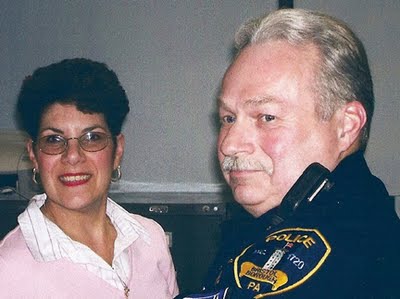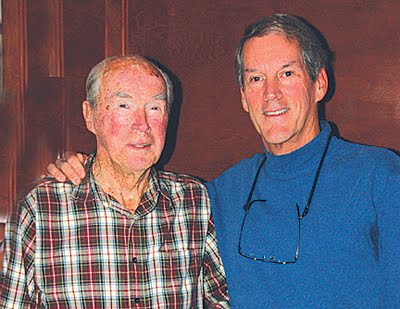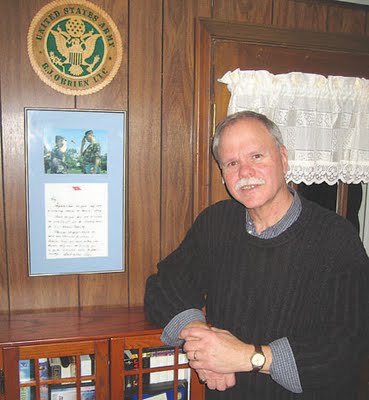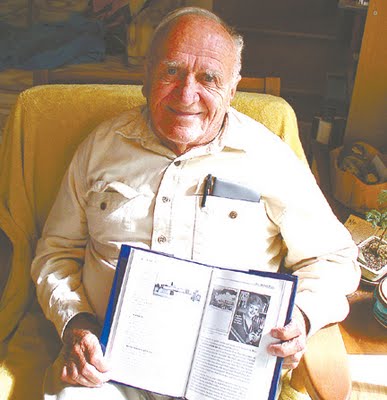Robert Lebo
Vet and long-time policeman is now Bristol’s Mayor.
By Tim Chicirda, BucksLocalNews.com

Robert A. Lebo, a graduate of Woodrow Wilson in 1966, has served Bristol Borough's community for years, living a patchwork of various experiences and careers.
Among these experiences were life as a Bristol Borough police officer spanning four decades, a D.A.R.E. officer for 10 years, a soldier for the United States Military, and most recently, the Mayor-elect of Bristol Borough.
A football lineman, cross country runner and track sprinter, Bob was also a member of the drama club. He performed in “South Pacific” as a “Navy guy” and also stage crew.
“I wasn’t a singer, so never had the lead role,” said Bob.
Three years after high school graduation, Bob was drafted into the Army, serving in Vietnam in 1969 and 1970.
As supply Sergeant E-5 (Buck sergeant), he kept the troops supplied with C-rations, ammunition, water and mail, among other things.
Bob earned the Good Conduct medal for his years of service and achievements during his “expedition” into Southeast Asia in the 199th Infantry Brigade, a major combat unit of the U.S. Army serving in the Vietnam War.
His shoulder sleeve insignia was a blue shield that featured a white spear in flames. The red ball in the middle of the patch represented the splitting of the atom and was meant to be indicative of how Infantry fought alongside the sophisticated weaponry of the nuclear age.
Bob still recalls the hours of boredom in the sun, mud and rain, punctuated with moments of sheer terror, physical and mental stress. He got out of the Army after his service obligation and proceeded to get on with his life.
Upon returning from the service, Bob was hired in April 1974 as police patrolmen and was promoted to Corporal in 1997, still maintaining his beat from Mill Street to Mulberry Street.
He was honored with the “VFW Policeman of the Year” in 1977 for saving six people from the Hayes street house fire, the Elks “Distinguished Citizen Award” and a letter of commendation from PA Governor Milton J. Schapp, among other recognitions.
In 1998, he began an additional career as D.A.R.E. officer for St. Mark, St. Ann and Warren P. Snyder- John Girotti Elementary Schools and in 1999, he earned his certification as a middle school officer.
“I always wanted to teach the youth the consequences of doing drugs and alcohol. There wasn’t a day that I went, that I didn’t love it,” said Bob, who had been the longest running D.A.R.E. officer in the Borough.
Sergeant Lebo retired from the Bristol Borough Police Department in Febuary of 2007 after 33 years of service.
Retired, Bob continued to drive the bus for the Borough school district, which he had been doing since 1988.
Then Lebo moved to the world of politics.
In what some deemed a surprise upset in an otherwise uneventful May primary election, Lebo defeated incumbent Mayor Joe Saxton, who was battling for another four-year term.
Lebo edged Saxton 1150-1084, though they each carried five of the 10 borough voting districts.
These results did not mean that Lebo was necessarily the next Mayor of Bristol Borough at that time, but with his name on the Democratic ticket in a highly-Democratic town, it was very probable and in fact, Lebo was elected Mayor in the general election months later.
Lebo won the mayoral race by a landslide, garnering 92.7 percent of the vote. He took 1,729 votes to Independent David J. Armitage Sr.’s 136.
“I will try to lead Bristol to a brighter future and manage the town and its services to the best of my abilities. I will try continuing progressing the vision of Bristol of being a thriving waterfront town,” said the new Mayor-elect Lebo. “I will also try to bring harmony back to Bristol. I love Bristol because it is a great town with great people.”
And nobody can argue with that statement, as history has shown one thing consistently: Bob Lebo has always been dedicated to Bristol Borough.
And, on top of this, he has been dedicated to his country, and that is why we salute Bob Lebo.
*****
Cate Murway contributed to this article.
By Tim Chicirda, BucksLocalNews.com

Robert A. Lebo, a graduate of Woodrow Wilson in 1966, has served Bristol Borough's community for years, living a patchwork of various experiences and careers.
Among these experiences were life as a Bristol Borough police officer spanning four decades, a D.A.R.E. officer for 10 years, a soldier for the United States Military, and most recently, the Mayor-elect of Bristol Borough.
A football lineman, cross country runner and track sprinter, Bob was also a member of the drama club. He performed in “South Pacific” as a “Navy guy” and also stage crew.
“I wasn’t a singer, so never had the lead role,” said Bob.
Three years after high school graduation, Bob was drafted into the Army, serving in Vietnam in 1969 and 1970.
As supply Sergeant E-5 (Buck sergeant), he kept the troops supplied with C-rations, ammunition, water and mail, among other things.
Bob earned the Good Conduct medal for his years of service and achievements during his “expedition” into Southeast Asia in the 199th Infantry Brigade, a major combat unit of the U.S. Army serving in the Vietnam War.
His shoulder sleeve insignia was a blue shield that featured a white spear in flames. The red ball in the middle of the patch represented the splitting of the atom and was meant to be indicative of how Infantry fought alongside the sophisticated weaponry of the nuclear age.
Bob still recalls the hours of boredom in the sun, mud and rain, punctuated with moments of sheer terror, physical and mental stress. He got out of the Army after his service obligation and proceeded to get on with his life.
Upon returning from the service, Bob was hired in April 1974 as police patrolmen and was promoted to Corporal in 1997, still maintaining his beat from Mill Street to Mulberry Street.
He was honored with the “VFW Policeman of the Year” in 1977 for saving six people from the Hayes street house fire, the Elks “Distinguished Citizen Award” and a letter of commendation from PA Governor Milton J. Schapp, among other recognitions.
In 1998, he began an additional career as D.A.R.E. officer for St. Mark, St. Ann and Warren P. Snyder- John Girotti Elementary Schools and in 1999, he earned his certification as a middle school officer.
“I always wanted to teach the youth the consequences of doing drugs and alcohol. There wasn’t a day that I went, that I didn’t love it,” said Bob, who had been the longest running D.A.R.E. officer in the Borough.
Sergeant Lebo retired from the Bristol Borough Police Department in Febuary of 2007 after 33 years of service.
Retired, Bob continued to drive the bus for the Borough school district, which he had been doing since 1988.
Then Lebo moved to the world of politics.
In what some deemed a surprise upset in an otherwise uneventful May primary election, Lebo defeated incumbent Mayor Joe Saxton, who was battling for another four-year term.
Lebo edged Saxton 1150-1084, though they each carried five of the 10 borough voting districts.
These results did not mean that Lebo was necessarily the next Mayor of Bristol Borough at that time, but with his name on the Democratic ticket in a highly-Democratic town, it was very probable and in fact, Lebo was elected Mayor in the general election months later.
Lebo won the mayoral race by a landslide, garnering 92.7 percent of the vote. He took 1,729 votes to Independent David J. Armitage Sr.’s 136.
“I will try to lead Bristol to a brighter future and manage the town and its services to the best of my abilities. I will try continuing progressing the vision of Bristol of being a thriving waterfront town,” said the new Mayor-elect Lebo. “I will also try to bring harmony back to Bristol. I love Bristol because it is a great town with great people.”
And nobody can argue with that statement, as history has shown one thing consistently: Bob Lebo has always been dedicated to Bristol Borough.
And, on top of this, he has been dedicated to his country, and that is why we salute Bob Lebo.
*****
Cate Murway contributed to this article.
 RSS Feeds
RSS Feeds






